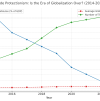Hedging Strategies for Volatile Global Markets: A Simple Guide for Investors
Global markets are always in motion, impacted by economic trends, political events, and unexpected global crises. For many investors, this volatility can feel overwhelming—one day, your portfolio is up, and the next, it’s down. But rather than trying to predict every twist and turn, savvy investors use a tool called hedging to protect their investments during uncertain times.
In this blog post, we’ll explore hedging strategies in simple terms and explain how they can help you safeguard your portfolio when the markets become unpredictable.

What Is Hedging?
Hedging is like taking out insurance for your investments. Just like you insure your car or home against potential damage, hedging protects your investment portfolio against possible losses in the market.
Here’s an example to make it clearer: Imagine you own a basket of stocks, but you’re worried the market might take a sudden dip due to political tensions or economic instability. A hedging strategy would involve taking certain steps—like buying insurance for your stocks—so that if the market does go down, the losses in your portfolio are minimized.
In short, hedging helps limit your downside risk in times of uncertainty.
Why Is Hedging Important in Volatile Markets?
Global markets can be highly volatile for several reasons, such as:
- Political instability (e.g., elections or conflicts)
- Economic recessions or recoveries
- Natural disasters
- Changing interest rates or inflation
When markets are volatile, prices can swing dramatically in either direction. For long-term investors, these fluctuations can pose a challenge. You might not want to sell your investments just because the market is temporarily down, but you also don’t want to watch your portfolio take a huge hit.
This is where hedging comes in—it offers a middle ground, letting you stay invested while limiting your risk.
Simple Hedging Strategies
Now that you understand the concept of hedging, let’s explore a few strategies that are beginner-friendly and can help you manage risk in volatile markets.
1. Diversification: Your First Line of Defense
One of the simplest and most effective ways to hedge your portfolio is through diversification. This means spreading your investments across different asset classes (e.g., stocks, bonds, real estate, or commodities) and regions.
By diversifying, you reduce the impact of any single investment performing poorly. If one part of your portfolio goes down, other parts may hold steady or even rise, balancing out your overall risk.
Example:
If you invest all your money in tech stocks, your portfolio is at high risk if the tech industry faces a downturn. But if you also own bonds, some consumer goods stocks, and maybe some real estate, your risk is more spread out. Even if the tech industry takes a hit, the other parts of your portfolio may still perform well.
2. Buying Put Options: Insurance for Your Stocks
A put option is a financial contract that gives you the right (but not the obligation) to sell a specific stock at a predetermined price within a certain time frame. Think of it as insurance for your stocks. If the stock price falls, you can sell it at the higher, agreed-upon price and minimize your losses.
Example:
You own shares in Company A, but you’re concerned the market may dip. You buy a put option for $100, giving you the right to sell your shares if they fall below that price. If the stock drops to $80, you can still sell it for $100, limiting your losses.
While options trading can be complex, buying a put option on a stock you already own is a straightforward hedging strategy to limit downside risk.
3. Using Inverse ETFs: Profit When Markets Fall
Inverse ETFs (Exchange-Traded Funds) are designed to move in the opposite direction of the market. If the market declines, inverse ETFs go up, providing a way to hedge against market downturns. These are useful for investors who want to protect themselves from broad market declines without selling off their investments.
Example:
If you own a broad market index like the S&P 500 and you think the market may drop, you can buy an inverse ETF that tracks the same index. If the market goes down, the inverse ETF will rise in value, offsetting some of your losses from the index.
4. Hedging with Commodities and Gold
Commodities like gold, silver, and oil tend to perform well during times of economic uncertainty or market turbulence. Many investors hedge against market volatility by buying gold or other commodities, which often retain or even increase value when stock markets are struggling.
Example:
If you fear a market crash, you might allocate a portion of your portfolio to gold. Historically, when stock markets drop, gold prices rise. Having exposure to gold can help balance out losses in your stock holdings during volatile periods.
5. Investing in Defensive Stocksl
Certain industries tend to do better in economic downturns because they provide essential goods or services. These are called defensive stocks, and they include sectors like healthcare, utilities, and consumer staples (e.g., groceries). By adding these stocks to your portfolio, you can hedge against economic slowdowns, as these companies often maintain stable earnings when others struggle.
Example:
If you’re worried about a recession, you might invest in a grocery chain, utility company, or pharmaceutical stock. These businesses are less impacted by economic downturns because people continue to need their products and services, no matter the state of the economy.
Should You Always Hedge?
While hedging can protect your portfolio, it’s important to understand that it comes with trade-offs. Hedging often involves additional costs, such as purchasing options or inverse ETFs, and it can limit your potential gains when the market performs well.
For long-term investors, riding out market volatility may be preferable to constantly hedging. The key is to strike a balance—hedge when the market looks particularly risky, but avoid over-hedging, which can reduce your profits in the long run.
Conclusion: Hedging as Part of a Balanced Strategy
Market volatility is inevitable, but that doesn’t mean you need to panic every time prices fluctuate. By using simple hedging strategies, you can protect your investments from sharp declines without abandoning the market altogether. Whether through diversification, options, inverse ETFs, or investing in defensive stocks, hedging offers valuable tools to reduce risk and keep your portfolio more stable.
If you’re new to hedging, it’s always a good idea to start small, educate yourself, and, if needed, seek advice from a financial professional to ensure you’re using the right strategies for your goals.


